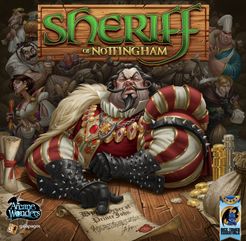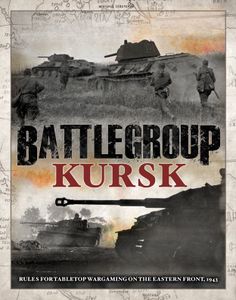I finally decided to purchase a copy of the latest Bolt
Action version 2 rules by Alessio Cavatore & Rick Priestley (Warlord
Games/Osprey, 2016) a few weeks ago. I should stress that I have no significant
previous experience of the first version, and therefore cannot comment about
changes made. I have also never played 40K, so cannot say whether Bolt Action
are similar or not. Since they arrived I have played approximately a dozen solo
1,000 point games using a diverse range of army lists, all late war European
games. Some games involved standard infantry-heavy forces, whereas others had
various tank add-ons, or infantry in APC’s etc. Most games used regular units
but I did try inexperienced units, and veteran units. All games used the
supplied scenarios and I have now played most of the 12 scenarios listed.
The publication is a beautifully illustrated, A5 sized,
hardback. The use of Osprey as the publisher means that many of their excellent
pictures are included, and these are augmented by a scattering of photos
showing various nicely painted miniatures. There is surprisingly little
‘fluff’, which is personal bug-bear of mine, and a brief timeline of WW2 is
solely there as an intro. The rules revolve around a re-enforced infantry
platoon structure with tanks/armour playing an ancillary role. This is exactly
the size of 20/28mm game I wish to play, which is great. As a consequence the
rules are infantry focussed, with the section on vehicles, artillery/air
supports and urban fighting added after the main rule structure has been
explained. Next there are 12 different scenarios, all briefly explained and
providing alternatives to the simple meeting engagement. Finally there are
basic army lists for the 5 major late war protagonists: Germany, USA, UK, USSR
and Japan. These lists are not exhaustive but do provide enough information to
allow representative forces to be generated. Bolt Action do sell additional
books on each army and/or theatre giving greater detail and expansion
opportunities, but I’m personally not sure I will go down this potential
financial sink-hole! I hope to peruse friends copies to garner the small
amounts of additional information I may require. It is interesting that the
lists in the main rule book do miss a few ‘obvious’ entries: no German
Panzerschreck teams, no US Marine flamethrowers, no British 2” mortars, no
Russian tank-riders. Maybe this is to encourage players to buy the supplements?
The rules themselves are well written and have numerous
clear illustrations to highlight the mechanics. When I needed to check an issue
in a game I was able to quickly find the relevant section in the book. All the
rules use the standard 6-sided dice (no fancy dice required).
The assignment of orders by the random drawing of custom
order dice from a bag works well (the authors do discuss cheaper alternatives
to these dice), and the range of orders available are consistent with those
found in many other rules. The random nature of the turn order allows for
uncertainty, reflecting the ‘fog of war’, and makes the rules very suitable for
solo play. Officers, especially higher ranks, can be useful for co-ordinated
moves, particularly early in the game, by drawing additional dice. The
non-active player can choose to order a targeted unit ‘Down’ to significantly
reduce the effects of incoming fire, but this burns a valuable turn for that
unit.
Movement is simple, both for infantry and vehicles; either
an ‘Advance’, which allows firing or crossing difficult terrain, or the double
speed ‘Run’ order. Bolt Action scenario games tend to only last 6-8 turns, so
there is little time to carefully manoeuvre or set–up an attack, instead forces
tend to get in fast. There is no subtlety in the infantry tactics; you cannot
use your MG34 to provide covering fire as the riflemen of the same squad dash
across the street, the whole section moves or not. Combat can occur in the very
first turn of a game!
Firing is also simple with a basic 3+ to hit (plus a few
modifiers), followed by a quick ‘to kill’ dice roll (adjusted by the target
quality). Bolt Action games are bloody, but hits also inflict ‘Pins’ even if no
kills result, which can be as significant as actual kills. Units with multiple
‘Pins’ can just sit around with their heads down, and often require rallying
(which is surprisingly easy but does negate a valuable turn). Additionally,
weakened units can suddenly evaporate leaving alarming holes in your lines at
the most inopportune times! Anti-tank fire is simple, requiring a penetration
dice roll and damage effect if successful. Bolt Action is not a set of rules
for ‘tankie’ gamers; there are only 4 levels of gun and 4 levels of armour. So,
if your thing revolves around variation between a PzKfw IV model F2 compared to
the H model, then these are not the rules for you! I soon learnt that the
German player should take plenty of cheap Panzerfausts. Firing HE rounds again
uses similar mechanisms and employs circular templates of different diameters
to determine the number of potential hits. From previous gaming experience this
can cause issues in opposed games; is the figure just in, or out, of the blast
zone? The irritating situation I commonly found using the rules, concerned
Snipers. They seemed to be far too deadly, picking of key team members at will,
and the best counter was to use your own sniper to take out the opposing
sniper.
In Bolt Action close combat is more frequent compared to
other rules I have played, and it is devastating and decisive. The loser is
KO’d and removed from the game. The defender’s best defence is to employ an ‘Ambush’
order to fire as the attacker comes in. But the question is whether to maintain
this order at the turn end and not fire at all (because you were not assaulted),
or try to convert it into a ‘Fire’ order and cause some damage to enemy units?
You can find opposing units both quietly sitting waiting for the other to
blink, resulting in an uneasy truce!
Off-table artillery strikes and close air support rules are
interesting because you are not certain about what will arrive, or when. In addition
to damage inflicted, they can cause widespread disruption by placing multiple
‘Pins’ on units close to the target zone. The British ‘free’ FAO team is a
powerful bonus, and the US FAC team with a second strike capability can also be
deadly. I’m not sure the Russian Katyusha elements should be an on-table
support option. I also liked random nature of air strikes and the panic they
cause to both sides, plus the possibility of friendly A/A fire occurring.
So, what do I think of Bolt Action version 2? How do they
compare with my other WW2 favourite, Chain of Command? Bolt Action gives a very
fast, action packed game that is fun to play. The simplicity of the rules means
there is little referring back to the main book and QRS covers most situations
(in fact, most actions don’t even require the QRS). They work very well for
solo play, and I look forward to playing opposed games in the near future. I
would summarise by saying Bolt Action gives a good ww2-GAME, compared to Chain of Command which gives a good WW2-game. I think I will
continue to use Chain of Command for opposed games against experienced players,
but Bolt Action will now be used for my solo play and those quick, pick-up club
games against non-WW2 gamers. I think it interesting that both sets of rules
focus on the same command level i.e. the re-enforced infantry platoon. If I
wanted to play using a higher command level with more troops, especially tanks,
I would probably opt to use the Battlegroup Kursk/Overlord rules.
Readers thoughts, comments, criticisms, disagreements are
always welcome. Finally, Bolt Action has encouraged me to play more WW2 games
and I’m now seriously considering buying a matching pair of Japanese and US
Marine forces.
 The game rules are simple and all players
quickly got into the swing of things – a good combination of honesty and lying
by all. This is very much a game of bluff, with a nice mix of bribery added. I
think all players could improve their bribes, we tended to stick to simple cash
offers rather than use goods or promises. Somehow no-one ever seems to believe
Elaine, so her bag was nearly always searched! I don’t think lying comes
naturally to her, and I feel she could exploit this trait to force the sheriff
to pay out for legal shipments. As I originally surmised when I first
encountered this game; Erin would be a good player. When the final points were
tallied, Erin won with a 20 point lead over myself. Gill was third and Elaine
trailed, but not by much. Having a lead in chickens, together with a few high
value smuggled goods, seemed to be the key to Erin’s success. All players
enjoyed the game and predicted that it would get many more plays.
The game rules are simple and all players
quickly got into the swing of things – a good combination of honesty and lying
by all. This is very much a game of bluff, with a nice mix of bribery added. I
think all players could improve their bribes, we tended to stick to simple cash
offers rather than use goods or promises. Somehow no-one ever seems to believe
Elaine, so her bag was nearly always searched! I don’t think lying comes
naturally to her, and I feel she could exploit this trait to force the sheriff
to pay out for legal shipments. As I originally surmised when I first
encountered this game; Erin would be a good player. When the final points were
tallied, Erin won with a 20 point lead over myself. Gill was third and Elaine
trailed, but not by much. Having a lead in chickens, together with a few high
value smuggled goods, seemed to be the key to Erin’s success. All players
enjoyed the game and predicted that it would get many more plays.
